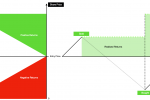
Is this step really necessary? Many of us would actually search online for “best stocks to buy now”. Otherwise we would probably follow analyst calls which have already done some form of research for you. The truth is that many analyst calls for Buy signals are somewhat scheduled and hence it might not be wise to buy right at the moment when the analyst calls for a buy or accumulate.
Advice: Gather as many perspectives as you like to but own your own decisions and you will always yield better results overtime.
I am writing this post to guide some of us who are clueless about what shares to pick. At best, most of us would recognise brand over anything else. For example, Singtel, BreadTalk, Sheng Siong and Capitaland will sound most attractive because they are well known and seem to be doing relatively well at some point of time. To explain further, lets use three share counters which are quite well known and analyse them together to see if they are suitable for trading, investing or for dividends in the long run.
Before having something in your portfolio, its always better to set up a watchlist first. Proposed Criteria for Selection
1. Dividend Yield per year (Dividends.sg Link)
- Dividends provides stable income for shareholders periodically (Most important for dividend portfolios)
- Payout ratio (DPS/EPS) over the past years will shed light on its sustainability and if the dividends will be adjusted in future
- Do take note how many years have the particular share counter has been listed on SGX
- This will determine the reliability of the share’s performance and therefore its dividend track records
| Name of Share counter | Dividends per year (Cents) | Dividends per year (%) | Payout ratio |
| Singtel (price at $3.20) | 17.5 | 5.46 | 92% |
| Sheng Siong (Price at $1.20) | 5 | 2.91 | 70% |
| Starhub (Price at $1.30) | 10.5 (after adjustments in 2019)) | 8.07 | 95% |
Starhub has the highest Dividend yields of 8.07% however, the payout ratio hints that it is rather unsustainable as compared to Singtel (marginally better) and Sheng siong with a healthier payout ratio.
2. Price/Earning (Also known as PE ratio)
- PE gives you an idea of “how many years does it take for the company to accumulate profits equivalent to the current price on the market
- In other words, how pricey it is to purchase this stock.
- This is a common point of comparison with everyday consumer products, as we only purchase certain goods at a higher price due to its brand.
- Based on how “branded” a particular share counter is; justifies its price tag.
| Name of Share counter | Price per share | EPS (Cents) | PE ratio |
| Singtel | $3.20 | 19 | 16.8 |
| Sheng Siong | $1.20 | 5 | 24 |
| Starhub | $1.30 | 11 | 11.8 |
Sheng Siong is currently the most expensive share to buy currently according to this reading as it takes 24 year for the company to earn the money equivalent to the price you are paying right now.
3. Net Asset Value (Also known as NAV or Book Value)
- What is the current true value of the company on paper (excluding all liabilities)
- This value is fundamental to all value investors because Value investors look out for under-valued investments
- One famous value investor in his earlier investing career is Warren Buffett, however do note that ever since the inception of Internet, trading and investments has become more accessible for multiple characters and personalities to enter the market.
- Therefore you will be able to find share counters that have “odd” Price over NAV (P/NAV) ratios in the market. More evidently, you will find many Singapore REITS to have P/NAV less than 1. But it has remained this way for a long time.
| Name of Share counter | Price per share | NAV (Cents) | P/NAV |
| Singtel | $3.20 | 1.84 | 1.74 |
| Sheng Siong | $1.20 | 0.2 | 5.931 |
| Starhub | $1.30 | 0.277 | 4.695 |
Singtel with the lowest P/NAV currently means that you are buying that share at a much lower price for its value compared to the other two share counters
4. Return of Equity (Also known as ROE)
- Return of equity refer to how much net profit is generated divided by the total equity of the particular share counter
- Do note that since this formula does not take into account liabilities and debt, it might be over representing the ability of a company to generate returns and profits.
- You can also take a look at Return of Assets (ROA) which will take into account some percentage of the total liabilities of the company
- Hence ROA will normally be lower than ROE.
- The smaller the difference in percentage in ROE and ROA signifies lower debt levels and therefore showing that the company requires less debt to make profits. (Efficiency of business)
| Name of share counter | ROE | ROA | Difference Between ROA & ROE 100% – (ROA/ROE)% |
| Singtel | 10.3 | 6.3 | 39% |
| Sheng Siong | 25.2 | 6.2 | 75.4% |
| Starhub | 36.3 | 6.1 | 83.2% |
As you can see from the table above comparing 3 share counters, Singtel has the smallest % difference whereas Starhub has the biggest difference.
Whilst there are many more measurements available, it is more practical to select a few to focus on before looking through the rest for further confirmation.
I hope you guys will feel some excitement after reading this short post and select your shares to include in your watch list.
Reference to SGX Stock Facts for info shown in the above post.






